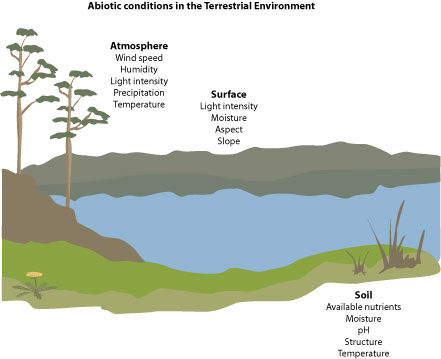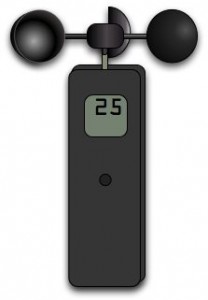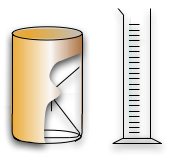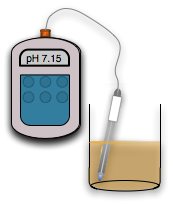Ecosystems are shaped by the nonliving environment of land and water—solar radiation, rainfall, mineral concentrations, temperature, and topography. The world contains a wide diversity of physical conditions, which creates a wide variety of environments: freshwater and oceanic, forest, desert, grassland, tundra, mountain, and many others. In all these environments, organisms use vital earth resources, each seeking its share in specific ways that are limited by other organisms. In every part of the habitable environment, different organisms vie for food, space, light, heat, water, air, and shelter. The linked and fluctuating interactions of life forms and environment compose a total ecosystem; understanding any one part of it well requires knowledge of how that part interacts with the others.
Abiotic factors are essentially non-living components that effect the living organisms of the freshwater community.
When an ecosystem is barren and unoccupied, new organisms colonising the environment rely on favourable environmental conditions in the area to allow them to successfully live and reproduce.
These environmental factors are abiotic factors. When a variety of species are present in such an ecosystem, the consequent actions of these species can affect the lives of fellow species in the area, these factors are deemed biotic factors.
This page will go into the abiotic factors of the freshwater environment which determine what sort of life would be suited to living (and adapting) to the conditions of the ecosystem.
As described in previous pages, the light from the sun is a major constituent of a freshwater ecosystem, providing light for the primary producers, plants. There are many factors which can affect the intensity and length of time that the ecosystem is exposed to sunlight;
- Aspect - The angle of incidence at which light strikes the surface of the water. During the day when the sun is high in the sky, more light can be absorbed into the water due to the directness of the light. At sunset, light strikes the water surface more acutely, and less water is absorbed. The aspect of the sun during times of the day will vary depending on the time of the year.
- Cloud Cover - The cloud cover of an area will inevitably affect intensity and length of time that light strikes the water of a freshwater ecosystem. Species of plants rely on a critical period of time where they receive light for photosynthesis.
- Season - The 4 seasons in an ecosystem are very different, and this is because less light and heat is available from the sun in Winter and vice versa for Summer, therefore these varying conditions will affect which organisms are suited to them.
- Location - The extreme latitudes receive 6 months of sunlight and 6 months of darkness, while the equator receives roughly 12 hours of sunlight and darkness each day. This sort of variance greatly affects what type of organisms would occupy freshwater ecosystems due to these differences.
- Altitude - For every one thousand metres above sea level, average temperature drops by one degree Celsius. Altitude will also affect the aspect of which sunlight hits the freshwater ecosystem, therefore playing a part on which organisms will occupy it.
As you can see, many abiotic factors can play a part in determining the end product, which organisms live and succeed in the freshwater ecosystem. The sun provides light for photosynthesis, but also provides heat giving a suitable temperature for organisms to thrive in. The temperature of a freshwater environment can directly affect the environment as a whole and the organisms that occupy it.
Enzymes operate best at an optimum temperature, and any deviation from this temperature 'norm' will result in below optimum respiration in the organism. All aquatic life are ectotherms, meaning their body temperature varies directly with its environments.
Temperature affects the density of substances, and changes in the density of water means more or less resistance for animals who are travelling in the freshwater environment.
The next page will continue to look at how these abiotic factors affect the way in which organisms operate in the freshwater ecosystem. The above examples of abiotic factors involve physical characteristics of the freshwater environment, which are continued, with subsequent information studying how the chemical composition of the freshwater ecosystem also affects which organisms survive in the environment and how they cope in these conditions.
Source: http://www.biology-online.org/6/3_abiotic_factors.htm
Measuring abiotic components of the system
June 6th, 2009
To a large extent it is the physical (abiotic) conditions within any environment that controls the plant and thus the animal (biotic) community that develops. In terrestrial ecosystems physical conditions in the atmosphere, at the surface and within the soils all interact to create the conditions that give rise to vegetation that develops.

The same is true of aquatic ecosystems where the physical conditions again give rise to conditions that directly influence the biotic communities which establish.

To make these links between the physical environment and the biotic communities, ecologist and environmental scientist need to be able to measure the abiotic conditions. Often this can be done with rather simple equipment, though some of the abiotic conditions need more complex equipment to measure in the field or sample need to be taken back to the lab for more accurate analysis.
Equipment to measure abiotic conditions
Atmospheric measurements:


 Wind speed can be measured easily with a hand held anemometer
Wind speed can be measured easily with a hand held anemometer
 The simplest way to measure humidity in the field is with a wirrling wet and dry bulb hygrometer
The simplest way to measure humidity in the field is with a wirrling wet and dry bulb hygrometer



